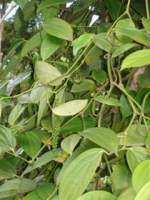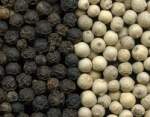|
|
|
|
Cooking Terms Explained -
Salt and Pepper |
A
B
C
D
E
F
G
H
I
J
K
L
M
N
O
P
Q
R
S
T
U
V
W
X
Y
Z
Salt and Pepper
Salt and pepper are so closely associated with each other
that this article includes both of them.
Salt
Salt is most definitely a rock and it's one of the few
rocks eaten by humans! It's necessary to human life because it contains
sodium chloride and other very important trace elements. Salt has two
principal uses in cooking, as a preservative and as a flavouring. Salt is
obtained either by mining for it or from evaporating sea water.
Table Salt
This is the salt we use for seasoning. It contains around
95% sodium chloride combined with anti-caking agents to ensure it stays
free-running. If you have a problem with your salt absorbing moisture and
not running freely, add a grain or two of rice to the salt container. The
rice will absorb the moisture, leaving the salt to run freely. Table salt
frequently has iodine added to it to reduce the health problems of iodine
deficiency.
Salt substitutes are commercially available if you wish to limit your
salt intake. The problem is that they contain large amounts of potassium
chloride which also has severe side-effects when taken in too large
quantities.
 |
Pepper
Although pepper comes in three colours, black white
and green, they all come from the same plant the Black Pepper
(piper nigrum).
Black pepper (by far the most
common) is produced from the unripe berries of the pepper plant.
The berries are cooked in hot water then left to dry in the sun or
by artificial heat. This results in black peppercorns which are
then ground to produce pepper. Black pepper is the most common
type. |
White pepper is the result
of soaking ripe berries in water for a week or so. During this time most
of the fruit drops off leaving only the seed. The seed is then ground to
give white pepper. White pepper is generally only used where black pepper
would stand out because of it's colour - potato dishes or white sauces in
particular.
 |
Green pepper is produced from
unripe berries and then chemically treated so that they keep their
natural green colouring.
The spiciness of pepper is derived from piperine which is in the
seed and the fruit of the pepper berries. Black pepper, which comes
from the fruit and the inner seed, also gets some flavour from the
fruit. |
Ground pepper quickly
looses its aroma so it's best to grind whole peppercorns as and when they
are required. Ground or whole, both loose flavour through evaporation so
it's best to store them in an airtight container. Currently Vietnam is
the world's largest producer of pepper.
|
|
|

